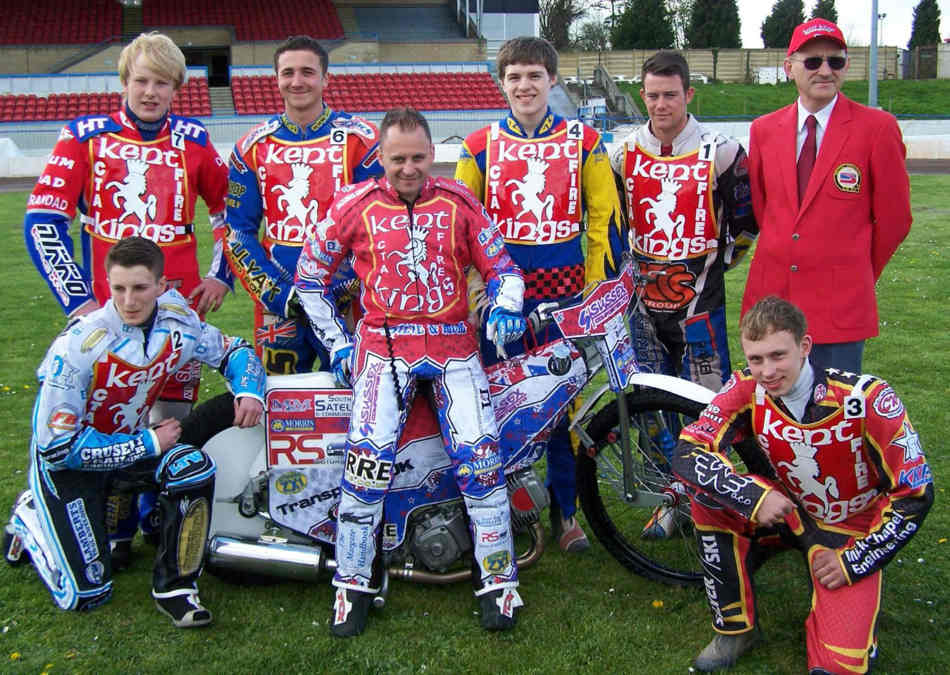
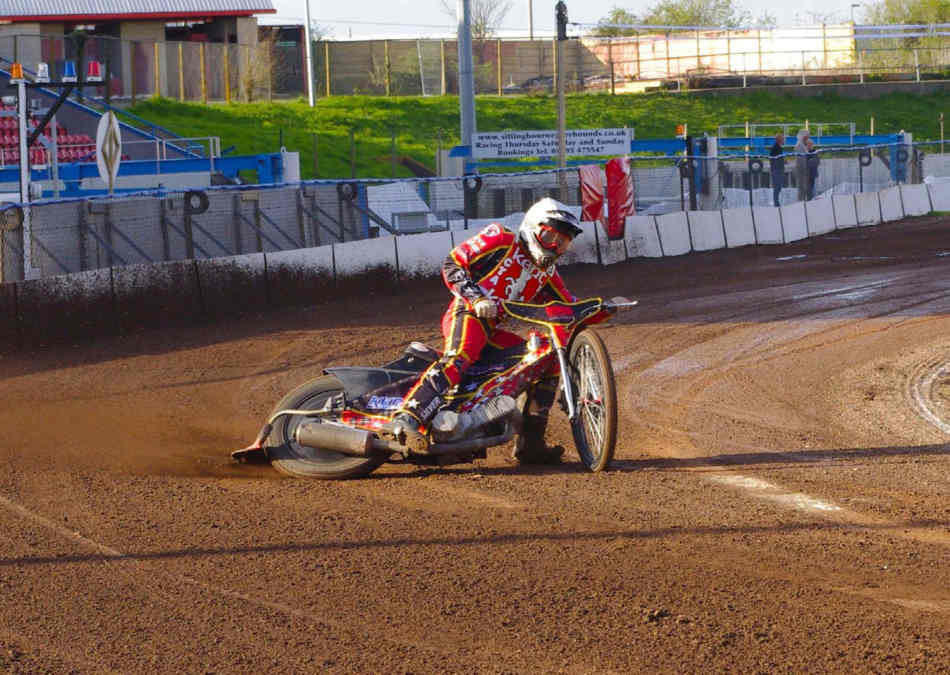 When you stand back and take stock of the many different strains of motorcycle sport in existence today, speedway stands out as being among the most unusual, with competitors’ bikes bearing the least resemblance to what we commonly know, expect and accept as being a motorcycle.
When you stand back and take stock of the many different strains of motorcycle sport in existence today, speedway stands out as being among the most unusual, with competitors’ bikes bearing the least resemblance to what we commonly know, expect and accept as being a motorcycle.
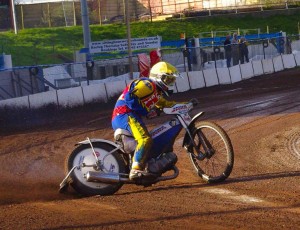 OK, they have an engine, handlebars and two wheels, but the similarity pretty much ends there. Speedway bikes have no brakes, one gear, one footrest, the suspension is provided by rubber bands, half the time the riders are doing their best to avoid grip, they spend much of their race with one foot down and while they only ever turn left the bars are turned to the right.
OK, they have an engine, handlebars and two wheels, but the similarity pretty much ends there. Speedway bikes have no brakes, one gear, one footrest, the suspension is provided by rubber bands, half the time the riders are doing their best to avoid grip, they spend much of their race with one foot down and while they only ever turn left the bars are turned to the right.
The origins of speedway in the UK can be traced back to the late 1920s, I’m not about to say where or when the first meeting was held as this appears to be a contentious issue, with tracks including Camberley in Surrey and Droylsden in Manchester being among the first.
But there are those who claim that the first ‘proper’ speedway meeting – as we know it today – took place in early 1928 at High Beech, in Epping Forest, Essex, when Australian riders Billy Galloway and Keith McKay introduced their take on the sport to the northern hemisphere.
Speedway is thought to have originated in New South Wales approaching a hundred years ago, when a farmer called Johnny Hoskins decided to stage dirt track races during agricultural shows. Makes a change from pinning rosettes on sheep I suppose.
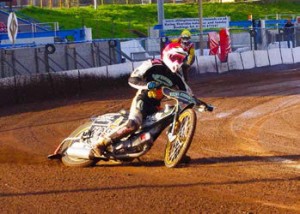 Like so many of the speedway tracks in the United Kingdom, the High Beech circuit is now a thing of the past. It is said you can still see traces of the track in the forest behind the King’s Oak Hotel, and if you take a look at Google Maps a suspiciously curved line of trees frames the Epping Forest Visitors Centre, which might be the location of the former track, but then again it could be nothing more than a feature of the landscape. Who knows?
Like so many of the speedway tracks in the United Kingdom, the High Beech circuit is now a thing of the past. It is said you can still see traces of the track in the forest behind the King’s Oak Hotel, and if you take a look at Google Maps a suspiciously curved line of trees frames the Epping Forest Visitors Centre, which might be the location of the former track, but then again it could be nothing more than a feature of the landscape. Who knows?
What set the Ilford Motorcycle Club’s 1928 King’s Oak Speedway match against the Aussies apart from previous gatherings was that this time the bikes had no brakes and the riders broadsided in an anti-clockwise direction round the bends on the dirt track, wearing a steel shoe over their left boot, trademarks and traditions that remain to this day.
For the uninitiated (which up to a point includes me) modern speedway bikes are light and powerful, fitted with 500cc single cylinder engines which run on methanol, which is basically alcohol distilled from wood.
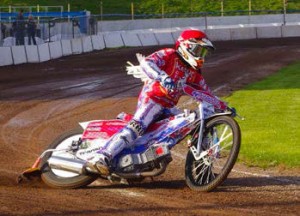 The engines are modern sloping units laid low in the frames to assist with lowering the centre of gravity, the most popular being made in the Czech Republic by Jawa/JRM, and also by the Italian company GM (although at the time of writing there is some speculation about the future of JRM).
The engines are modern sloping units laid low in the frames to assist with lowering the centre of gravity, the most popular being made in the Czech Republic by Jawa/JRM, and also by the Italian company GM (although at the time of writing there is some speculation about the future of JRM).
The frames tend to be of a lightweight tubular construction with two distinct styles of rear subframe, these are either curved where the rear wheel is mounted, or ‘diamond’ shaped, which is best seems to depend on who you ask.
Just behind the adjustable steering head the tiny fuel tank hangs below the main frame tube, holding just enough fuel for four or five laps, depending on the length of the track. Oil to lubricate the final drive chain is in a cylindrical tank in the main frame tube.
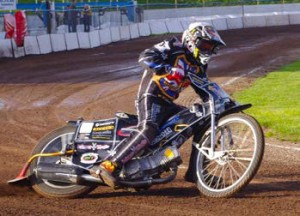 The near vertical forks are leading link (like a Honda C50) but in a more extreme way, with suspension supplied by rubber bands fitted between the main fork stanchion and the tip of the cantilever link, adjustment is dictated by the elasticity of the rubber or even the number of bands fitted. To prevent the Zebedee effect a damper is fitted to one side.
The near vertical forks are leading link (like a Honda C50) but in a more extreme way, with suspension supplied by rubber bands fitted between the main fork stanchion and the tip of the cantilever link, adjustment is dictated by the elasticity of the rubber or even the number of bands fitted. To prevent the Zebedee effect a damper is fitted to one side.
Tyres are strictly controlled and limited to a specific manufacturer to ensure parity on the track, the rear tyres bearing a strong resemblance to those used on trials bikes. These are secured to the rim by a series of screws to counteract the massive torque generated when the starting tapes fly up.
The whole bike is then covered with something akin to a horse blanket, which is usually festooned with sponsors’ logos, with a further cover on the handlebars and a spoiler disc on the rear wheel to aid downforce and to help keep limbs out of the spokes during the frequent tumbles.
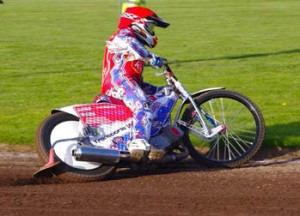 With more than 500 horsepower per tonne (including the rider) speedway bikes are said to accelerate faster that F1 cars, but without the luxury of four fat and soft pre-heated Pirelli tyres, carbon brakes or a grippy track.
With more than 500 horsepower per tonne (including the rider) speedway bikes are said to accelerate faster that F1 cars, but without the luxury of four fat and soft pre-heated Pirelli tyres, carbon brakes or a grippy track.
For the riders, leathers are a thing of the past, with colourful one-piece printed Kevlar suits (surprisingly enough known as ‘Kevlars’) being the order of the day, often printed with sponsors logos and names. The riders also wear coloured caps on their helmets to indicate
team position.
I’ve ridden some pretty powerful bikes in my time (including a JAP powered speedway bike about 35 years ago) but I can’t quite imagine firing myself down a loosely surfaced track towards a sharp left hander on such a machine, and then throwing the back wheel out sideways while propping the whole thing up with my left leg.
But that’s what these extraordinary riders do, alongside three or occasionally four competitors, for four short laps before the chequered flag falls. Three points are awarded to the race winner, two for second place, one point for the third rider who crosses the line and diddly squat for last place.
Tracks tend to be around 300 metres in length and usually oval, lap times are around 15 seconds, which means that races tend to last for just a minute.
Each team is be made up of seven riders and a manager, with a typical meeting or ‘match’ consisting of 15 races or ‘heats’ usually between two teams, with two riders from each team taking part in each heat.
Have you got all that? Good. To further complicate matters the riders are then
given a ‘Calculated Match Average’, which is worked out like this:
Total Points/Total Rides x 4, this is worked out over six home and six away matches. Yes, I’m baffled too. I guess
you would need to follow the sport to understand it.
One person who both follows the sport and understands the rider ratings is Martin Teraud, a speedway fan for more than 40 years. Martin was able to give me a little more background information on the sport:
“There are 3 speedway leagues in the UK, you have The Elite League; teams in this league include Belle Vue (Manchester), Birmingham, Coventry, Eastbourne, Kings Lynn, Lakeside (Essex), Peterborough, Poole, Swindon and Wolverhampton.
Then there’s the Premier League, which includes Berwick, Edinburgh, Glasgow, Ipswich, Leicester, Newcastle, Plymouth, Redcar, Rye House, Scunthorpe, Sheffield, Somerset (Highbridge) and Workington.
Finally, there’s the National League (which is a training league) and includes Buxton, Coventry, Dudley (who race at Wolverhampton), the Isle of Wight, Kings Lynn, Kent (Sittingbourne), Mildenhall and Stoke.”
Martin is well versed in the history and the fortunes of speedway – “In the early days (1930s) the sport was second only to football in terms of attendance figures. In fact Wembley probably owes its existence to the crowds speedway brought in.
“A brief revival after the Second World War saw speedway maintain its popularity into the early 1950s but regrettably attendance has been on a downward spiral ever since.
“Now tracks struggle to survive on quite meagre attendances. The sport probably isn’t even in the top 20 crowd wise these days, despite regular television coverage.
“Speedway often gets into the top 2 or 3 in respect of viewing figures on whichever Sky channel it appears on, sadly televised meetings get some quite embarrassingly low crowds.
“In my opinion the sport is slowly dying on its arse in the UK, not quite dead, but on life support. If I knew why I’d put a stop to it. I guess people have more choice these days on what to do with and where to spend their money.”
Martin considers that the current economic crisis maybe partly to blame: “Maybe spending around £15 – £17 for just 15 minutes of racing doesn’t represent value for money. I often wonder where all the fans have gone.
“I think maybe they’re all stopping at a home. Like pubs and clubs, perhaps speedway is too expensive for an evening’s entertainment.”
“An article in The Guardian described speedway as the sport with men on 500’s watched by 500. The sport has reached the stage where it overstates the crowd size at some venues.”
“Whereas people like Peter Collins, Ivan Mauger, Barry Briggs and Ole Olsen were household names in the 1970s it’s doubtful whether the man in the street could name the current world champion. “
“Unless it was Poole High Street. (Current World Champion Chris Holder rides for Poole…)”
“It’s a different story in Poland. Speedway is one of the most popular sports, the Polish Ekstraliga (division one) has the highest average attendances for any sport in the country. “
“Some riders are reputedly on £1,000-£1,500 + per point. One rider reckoned he could earn more just for turning up in Poland than riding unbeaten in a UK fixture.”
“These days most of the top riders compete in several leagues at once, for example Poland, Sweden, the United Kingdom and Denmark.”
“The World Championship is now run over 12 Grands Prix, 3 of which take place in Poland, which is where the crowds are.”
“The British Grand Prix takes place in the Millennium Stadium Cardiff, where crowds of up to 45,000 have been known to turn up, probably more than the combined weekly attendance figures at all the UK tracks
put together.”
According to Martin even clubs with a solid fan base don’t always find survival easy: “My team Cradley Heath closed in 1995, then had one year at Stoke before closing completely. They were resurrected in 2010 as the Dudley Heathens riding in the National League at Wolverhampton.”
“Their attendances match
and sometimes exceed those of our Elite League landlords. The search continues for a track of our own but we seem to be dealing with a council who oppose all sports. Dudley is one of the largest towns in the UK but doesn’t even have a football league club (other than very minor league football)”.
With Martin’s words ringing in my ears I was therefore pleasantly surprised to hear that after a break of more than 25 years, speedway was making a return to Kent, with the opening of a new track at the former home of Sittingbourne Football Club – ‘The Brickies’.
There has been a track at Marshbank Farm in Iwade near Sittingbourne for many years, but this was little more than a training track, with few facilities, whereas the new track at Central Park is a full blown stadium, with grandstands, terraces and as often seems to be the case for speedway tracks in the UK, a greyhound track.
Promoter Roger Cearns, whose family ties with the sport stretch back over several generations, was the joint driving force behind the venture along with speedway veteran Len Silver. Their efforts came to fruition in early May 2013 with a special press launch at the venue.
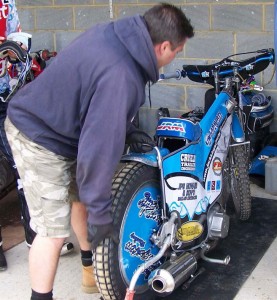 The track is home to the newly formed Kent Kings team. Official programme editor and track commentator Derek Barclay told me that Central Park was the first new speedway circuit in the UK to be given planning permission since the 1960s. One of the conditions of the planning consent is a strict noise curfew, even with a high acoustic fence built around the stadium, the riders and mechanics were prevented from starting the bikes until 6.30pm on the evening of the meeting.
The track is home to the newly formed Kent Kings team. Official programme editor and track commentator Derek Barclay told me that Central Park was the first new speedway circuit in the UK to be given planning permission since the 1960s. One of the conditions of the planning consent is a strict noise curfew, even with a high acoustic fence built around the stadium, the riders and mechanics were prevented from starting the bikes until 6.30pm on the evening of the meeting.
Interestingly while Len Silver was diligently watering and levelling the track, Derek informed me that until the press event no speedway bikes had ever been on the track, which would
make setting the bikes up little more than educated guesswork.
Wandering round the pits, I was impressed by how friendly and welcoming the riders and their support team members – mostly parents – were. I was quite surprised to see how young most of the riders were.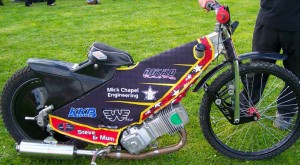
Energy levels were such that during the wait for the curfew to be lifted a handful of the young riders repaired to the nearby football pitch for a kick about (in their Kevlars) until concerned parents warned them about the possibilities of their being knackered halfway through
the meeting.
I asked 19 year rider old Ben Morley about setting up the bikes. I was struggling to see how such a basic motorcycle with controlled tyres, no gears and no brakes could require much setting up, until Ben explained that most circuits were of differing lengths and speeds, with variations in the looseness of the surface affecting grip levels, which would in turn alter the characteristics of the bikes.
This was countered by a surprising number of variables, including tyre pressures, sprocket sizes and changes in the make up of the multi-plate clutches, along with the adjustment of the biting point, and even seat height and lever positions to suit individual riders’ preferences.
I asked Ben how much of his time speedway took up, to which he replied that when he wasn’t working with his father (and chief mechanic) at their engineering company, the sport accounted for most of his waking hours.
When I asked how this affected the social life of a teenager, he added that his girlfriend was into speedway, and that her dad was one of his mechanics!
Fellow rider Sam Woods, also 19 admitted to having problems with his employers more than 150 miles away in Boston in Lincolnshire, but with travelling to an average of three meetings a week all over the country with dad (and former rider) Martin it’s perhaps easy to see why.
Sam broke his left wrist in five places when he crashed heavily while racing at Slangerup Speedway Club in Denmark in 2010. Proudly showing off the scars he told me that the Danes had considered him crazy.
“When the Danish lads crashed, that was it, game over, they’d put the bike back in the van, and they were off. With me, as long as the bike was rideable I’d get back on and carry on racing. They couldn’t believe it.”
This l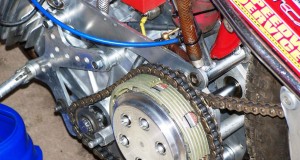 ed to one of the Danish commentators making him ‘Man of the Match’ – not because he’d won, but for his sheer perseverance.
ed to one of the Danish commentators making him ‘Man of the Match’ – not because he’d won, but for his sheer perseverance.
Martin added that Sam had recently passed his driving test, but despite having bought a small van he had been quoted more that £17,000 for insurance when he’d told potential insurers that it would be used for speedway racing.
With the bike currently being carried on a rack on the back of the family Mondeo, Sam was limited to bringing just one bike along to the meeting, while most of his fellow riders
had two.
With my background in groundsmanship I asked Sam about the best starting positions on the track. A 1500 metre six lane oval running track has staggered starting lines to ensure that the runners all arrive at the first corner at the
same time.
Surely with the bikes staring in a straight line it would be an unfair advantage to be on the inside? Sam explained that he preferred to be second or third from the inside, as the rider who got the best traction from the start would get to the corner first, and ‘close the door’.
The optimum racing line past the start/finish is in the third position, so most of the shale has been cleared, ensuring that the back wheel would get solid grip. Once at the corner however grip was the last thing the riders wanted.
“If you get grip on the corner, you’re heading for the fence” Sam told me. “Which is why it’s important to get the back wheel spinning, to maintain your speed and be able to slide evenly round to the straight”.
Football over, it was time to start the action, and with the bikes on their paddock stands I was amazed to see the bikes being started by taking a firm hold on the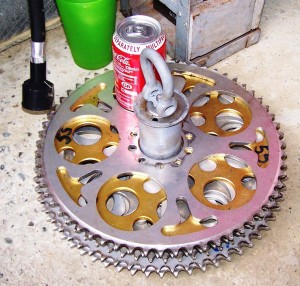 back tyre, and just turning it.
back tyre, and just turning it.
As the machines fired up the glorious smell of Castrol R wafted through the air, and with the sights and sounds matching this heady aroma, suddenly this speedway meeting was united with dozens of other motorsports, as a palpable sense of excitement, anticipation and energy filled the paddock.
With the first race underway the speed was staggering, with the young riders hitting 70 or 80 miles per hour within the space of a few feet, before throwing their machines sideways and sliding round the bends, their left feet skidding along on their metal shoes.
Each heat was over as quickly as it had started. Spills were frequent, but the attending officials were quickly and efficiently on hand, the waiting ambulance not needed.
After just a few heats Sam caught the traction he didn’t want on one of the bends and he was catapulted into the catch fence. Quickly up again, he pushed his bike back to the paddock as the race was stopped and the fence repaired.
Catching up with him in the paddock, I checked he was OK before asking him what had happened. As we chatted, a bumble bee flew into the pits. Incredibly, this young man – who’d moments earlier been bravely sliding a motorcycle sideways round a bend at speed on a loose surface looked fearful of the tiny creature, and then it was gone.
Sam explained that the track was still new, and much of the loose top surface had gone after a few heats, and his bike had simply gripped the surface in the middle of the bend. Another returning rider confirmed that this was the case.
Unfortunately for Sam, his racing was over for the evening, as his forks had been bent in the crash and the front wheel was now almost touching the engine. Martin Woods told me that he could have used another bike if they’d brought one with them, and that he would easily be able to swap the self contained engine into another frame in a matter of minutes.
I suggested that they would be able to head back to The Fens for an early night. “Oh no, we can’t do that” said Sam immediately. “There’s a meet and greet with the fans after the match, they’re the most important thing about speedway”.
His dad nodded sagely.
As I made my way home from the inaugural Kent Kings speedway match I couldn’t help but admire the grit and determination of these young riders on their wild machines. As for me, well I felt I’d only just broken through the surface of this sport to find something much tougher and resilient below.
The courage, skill and determination of the riders and their families deserves to reach a much wider audience, and hopefully the launch of the Central Park Speedway in Sittingbourne will go a long way towards making that happen.
Martin Haskell
Thanks to Martin Teraud, and to Derek Barclay and Tim Allan at Kent Kings for their kind assistance.
Visit the Kent Kings website for more information and fixture dates.
www.kentkings.co.uk
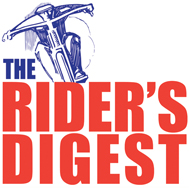
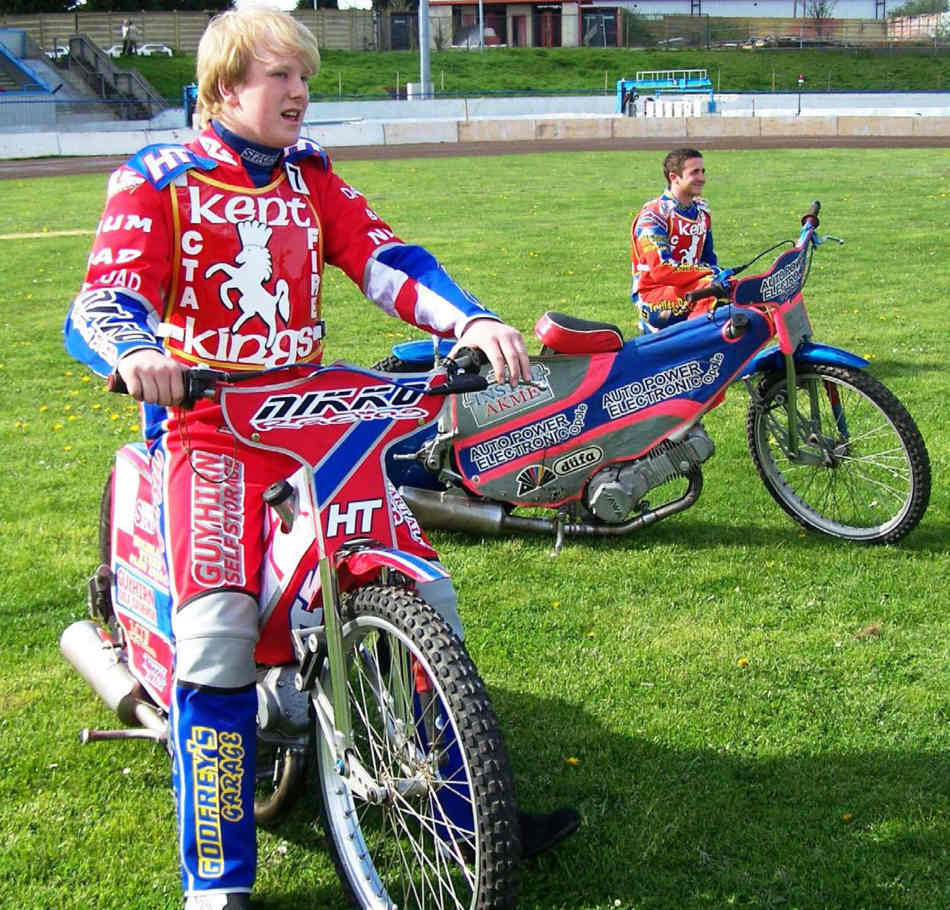

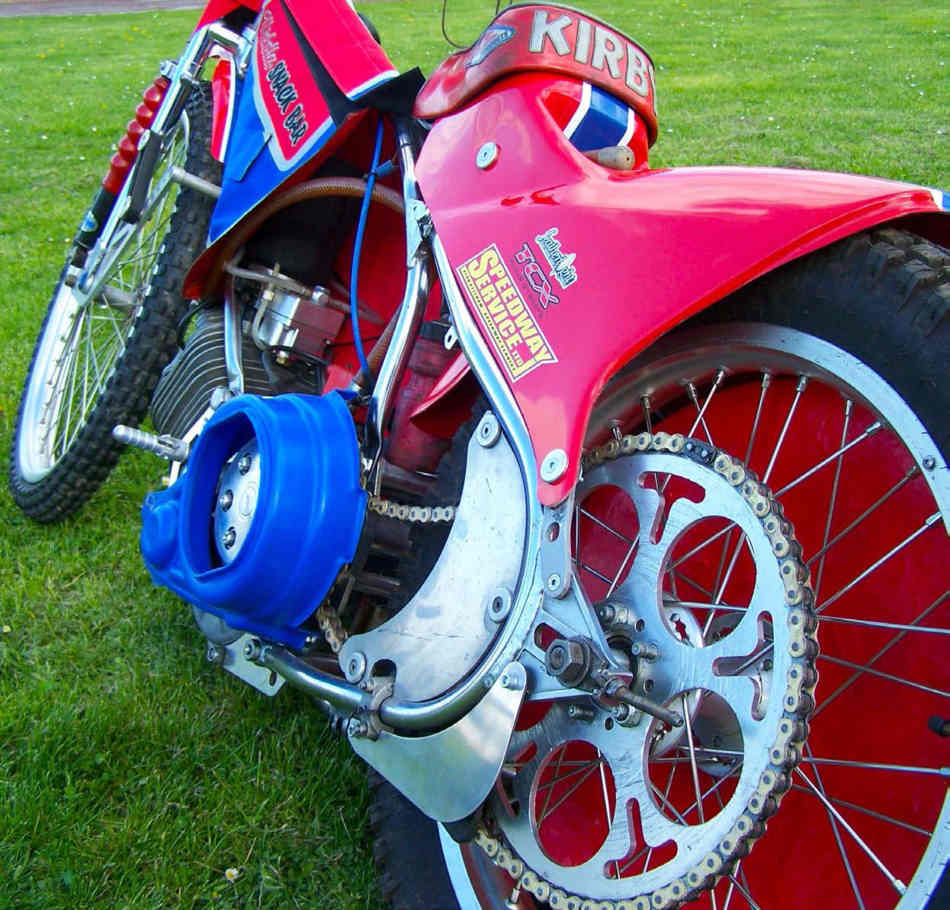
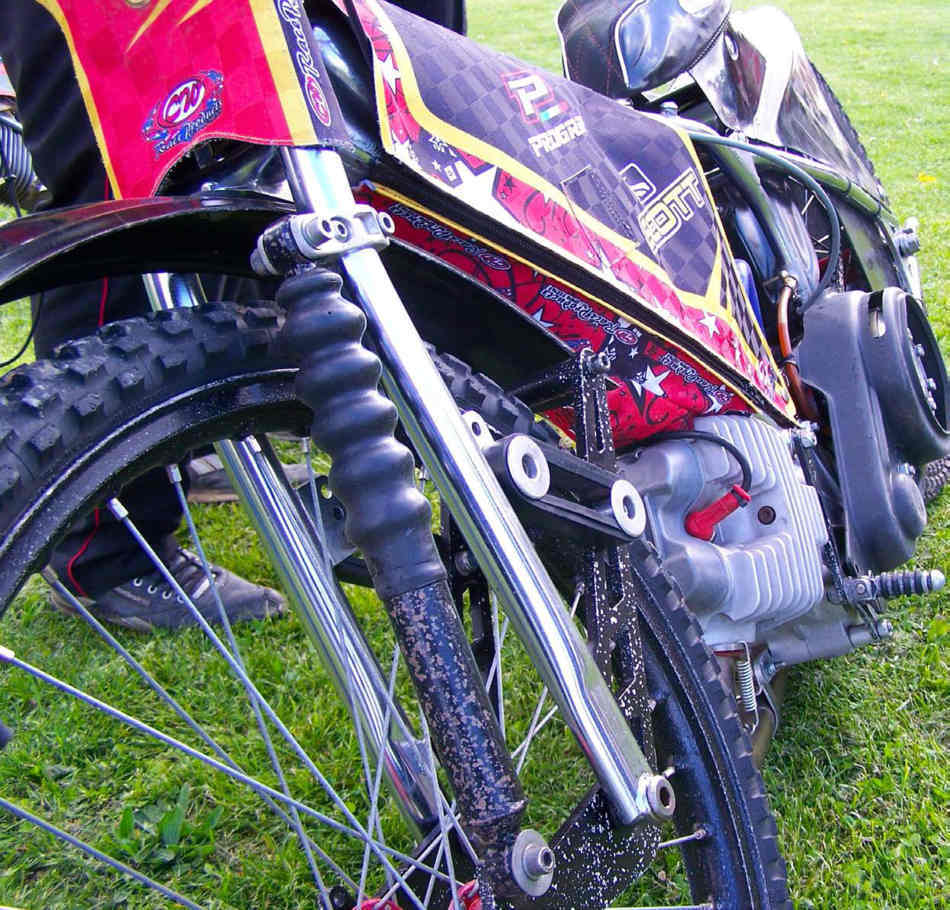
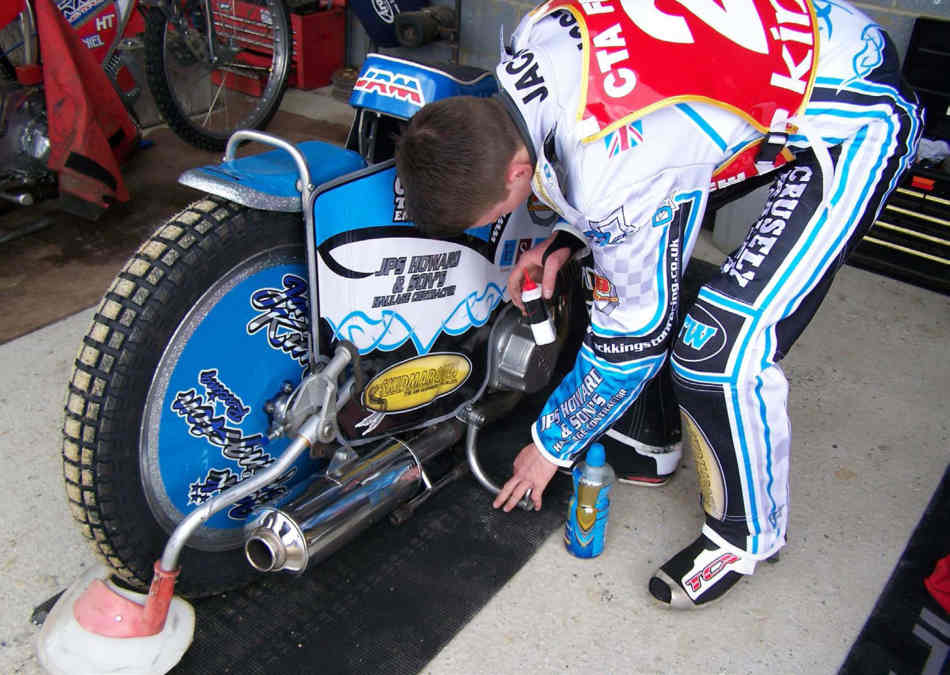
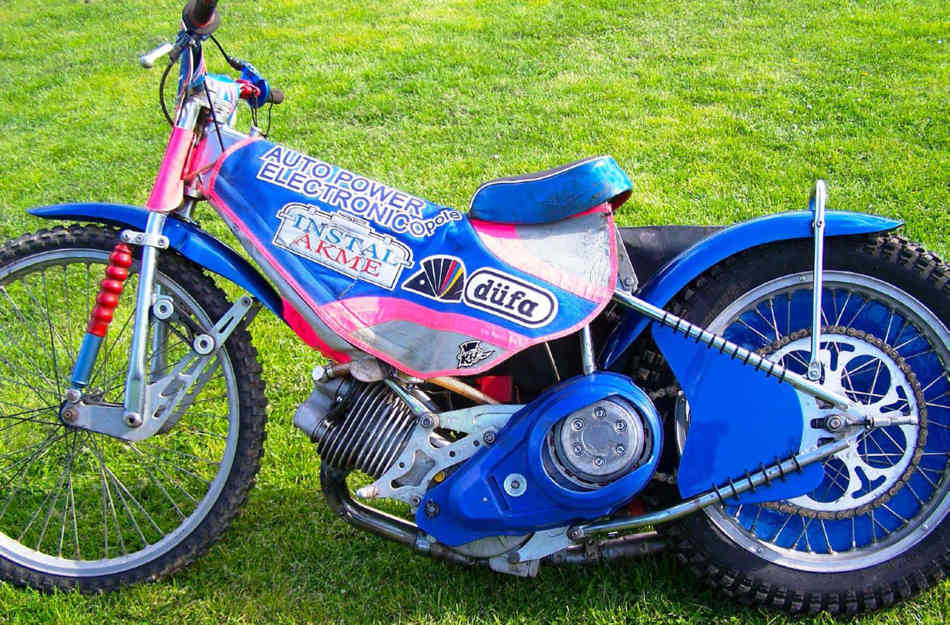



Loved the article, the early description really captured the need to read the rest. It is something my 11 year grandson has recently gotten into, we spend most weekends at a speedway track somewhere in the country where he nails it around the oval with the back end hanging out! While I look on with the heart rate ever increasing. We’ll be riding at Sittingbourne later in the year.
We have a great time and love every minute of it. Cheers Ross
Thanks for your comment Ross, much appreciated, and good luck to your grandson for his speedway career, he has started at a good age!